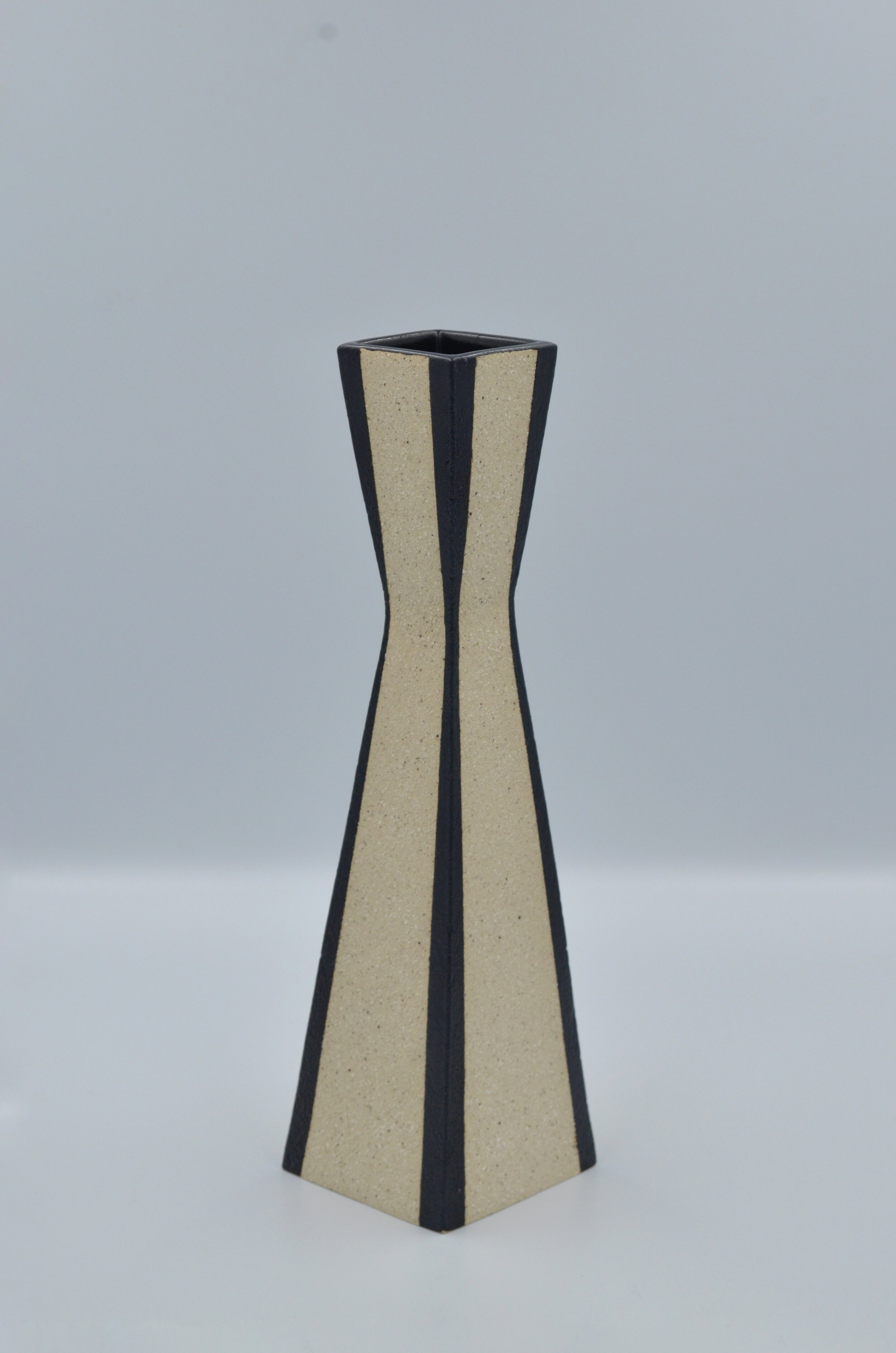TWO CLAY ARTIST WHO WORK WITH INTUITION AND INTENTION:
DRAGANA KOJIC & CONSTANZA LÓPEZ-CAPARRÓS
Self-taught Serbian ceramicist Dragana Kojic makes artist clay forms.
She started building clay vessels over a decade ago, focusing o
n the sculptural element of her work instead of the utilitarian and allowing the process to shape the piece.
White Portal
Kojic uses coil building methods, allowing each work of art to slowly grow upwards and almost create themselves as she guides the shapes. She finds the process meditative and absorbing, which she says allows her to be fully present and focused. The tactile connection between material and maker has always been important to her.
Cathedral
“From the start, the handmade element was crucial to me,” explains Kojic. “Although I later learned to work on the ceramic wheel, I continue
to make vessels and sculptures by hand predominantly.”
Much of her work is inspired by architecture.
The work that is included in the Cluster Crafts online exhibition is part of a body of work created in 2019. Kojic was working on a series of new pieces
when the Spring lockdown of 2020 was announced
and prevented her from being able to fire and complete them. In the new collection, which she is has since been able to finish, she explores how she can build ceramic pieces that move outwards in a horizontal plane.
Rising | 02
Rising | 01
Rising | 03
“Lately, in order to explore horizontal possibilities
of ceramic sculpture,” she explains. “I started using
the technique of slab cutting and making each form
from a flat horizontal slab of clay by cutting and bending its elements. I used this technique to make works for the Cluster exhibition and book.”
The pieces that are available on the Cluster online shop are inspired by Sacral architecture, mainly basilicas and cathedrals. Kojic leaves most of the pieces only partially glazed or completely unglazed, but sands and polishes the face of the clay to create a smooth surface.
Geometric Vase IV
Where Kojic’s work comes from a place of intuition
and exploration with the material, Spanish artist Constanza López-Caparrós works instead
with an eye on the detail and a deliberate rigour
in her process. The two opposing approaches used
by the ceramicists is visible in the spirit of their work.
Born in Mallorca, López-Caparrós studied in Barcelona before moving to Mexico in 1990. She settled in Xalapa, the capital city of the state of Veracruz.
Geometric Vase VI
Her introduction to ceramics came through various studios in Mexico
and Brazil, where she learned to work with clay and took courses
under different teachers. Her first teachers, Hilda and Concepción Hernández taught her the craft with rigour and discipline,
which she still uses in her approach to this day. She often uses slab building methods that allow her to create edges,
corners and straight lines with ease and accuracy.
Estridentópolis
Geometric Vase VIII
“From the most basic elements that we can find in this world – earth and water –
we can create a fabulous work material,” says López-Caparrós. “It is fascinating how, with something as formless as clay, an infinite world of shapes can be created.
You never stop having fun with ceramics.”
Since those first teachers, López-Caparrós has learnt in the studios of many brilliant Central and South American artists. In 2012, López-Caparrós opened her own studio amongst the coffee plantations of Coatepec, Veracruz.
Though her pieces are not exclusively controlled and precise,
the series included in the currently Cluster Crafts exhibition and shop
do demonstrate this aspect of her work. Also works in a freer way,
with more experimental firing etc in other series of work.
As part of the Cluster Crafts collection, López-Caparrós has selected pieces from her series named Estridentópolis. These are vases with straight lines, pyramidal cuts and a chromatic finish
in black and white.
“They are pieces built with ivory-white stoneware plates partially glazed in black,” explains López-Caparrós. “The name of the series refers to the city of Xalapa,
where I arrived in Mexico many years ago and which was nicknamed Estridentópolis
by the members of a Mexican artistic avant-garde of the 1920s, the ‘Estridentismo’.
This movement followed ideas of modernity and its symbols – skyscrapers,
radio antennas and telephone poles.”
Her ceramic vessels, geometric in shape and colour, feature simple lines on the faces
of the slabs. These lines reference the antennas that the Estridentistas represented
in their paintings and engravings. The black and white pallet also references the artworks and printed manifestos in which they communicated their ideology.
This brief avant-garde movement, which existed in Mexico in the 1920s,
celebrated the symbols of the modern world. The straight line,
which was very much in vogue in the styles of that time,
evokes a feeling of Art Deco.
“Much of my work is inspired by organic forms, stones, leaves, seeds,
what I call ‘landscape fragments’, also in terms of the colours: brown, ochre, green,” explains López-Caparrós. “However, in my most recent work I have been exploring shapes with straight lines and colours that are further removed from the natural world, such as black-white contrasts, taking inspiration rather from architectural forms
or decorative elements, from art deco objects such as vases.”
The precision and the single line give the work a utilitarian feel,
where Kojic’s vessels have more extravagant character.
Geometric Vase V
Work by both Kojic and López-Caparrós is available
through the Cluster Crafts online shop.
Thank you for reading,
Katie De Klee & Cluster Team.




